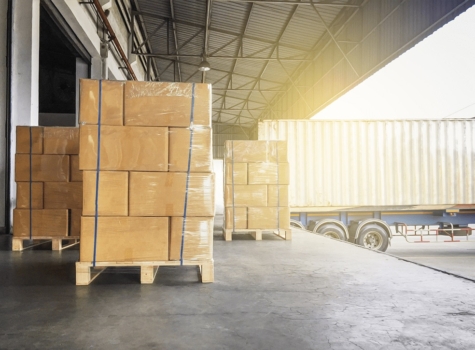When you shop on eBay or Amazon, do you look at customer reviews of products before you buy them? One type of comment you see a lot of is about how fast the product shipped. You see comments like “Arrived before I knew it,” and “Got here really fast!” While shipping may have little to do with the quality of the products you sell, it is a critically important aspect of customer service as well as your overall brand reputation. One of the most important things to understand is, the buyer’s number one pain point is the anticipation they feel during shipping. So, to remain competitive in today’s online-shopping-crazed economy, the one foundational aspect many online businesses have the most to gain is in Order Fulfillment optimization.
This post delves deeper into logistics trends then-now-and-future to help you stay ahead of the 2020 curve when competing to deliver superior customer service and grow your business.
Looking Back: Order Fulfillment Optimization Logistics Trends for 2019
Ever since ecommerce boom, the race has been on to deliver products faster with the fewest errors possible. In 2019, we saw the race for faster delivery hit a few bottlenecks, both legal and physical. The ability of tools such as drones to fly freely ran up against privacy laws. Delivery technology appeared to have reached a limit short of asking drivers to speed and forgo sleep.
Logistics Safety
The way we know these bottlenecks became serious was seen through companies suddenly making logistics safety their priority. With greater connectivity and more robust data, concerns over logistics safety and cyber-security came to the forefront. Customer data faced new challenges, and enhanced data richness gave drivers and fulfillment professionals new corners to cut, posing a challenge to safety.
“Elastic Logistics”
This refers to the ability to expand and retract shipping capabilities as demand shifts. You could think of it as the ability to roll up an unused road like a carpet, and then to roll it out again when the need arises. Elastic logistics are less than permanent shipping assets. Instead of building a steel warehouse, a company might rent a storage building, or use a mobile container truck as a temporary shipping base of operations. For these to work well, you need real-time data and powerful shipping management APIs.
Collaborative Robots & Chatbot
Collaborative robots, or cobots, have been used increasingly to enhance storage, packaging, and picking. These devices have been around for a while, but recently they have seen a few enhancements that shippers wanted to leverage. At the same time, chatbots removed a barrier for communication between online sellers and their customers. Chatbots have become one of the industry’s foremost customer-facing APIs.
Looking Forward: Order Fulfillment Optimization Logistics Trends for 2020
In 2020, you can expect to see many of the above trends continue to develop since they are still massively useful.
As safety became an issue in 2019, companies have turned to delivery experience enhancement. These are Order Fulfillment optimization methods that help to alleviate the customer’s “gotta-have-it-now” anxiety. These methods of order experience enhancement are all about letting the customer in on the shipping process. One massively effective way we can enhance customer experience is simply by raising transparency of the shipping process. When it comes to improving customer experience, this is done with customer-facing APIs.
Customer-Facing Shipping Tracking API
A Shipping API is an important way to let a given audience in on a given process. In this case, we give the customer access to the shipping process to ease “when-do-I-get-it” anxiety. The goal here is to make the customer feel as if they already have the item by telling them exactly where it is at all times.
- Shipping API: Our powerful suite of Shipping APIs give your supply chain the ability to inform the customer at the exact moment when their item is packaged, labeled, and put on the truck for shipment. This may sound small, but to the buyer it tells them early on that they are not going to be left in the dark during shipping.
- Shipping Tracking API: Once your customers know the item is on its way, they can enjoy the experience with your brand by monitoring its progress across the country toward their doorstep. EasyPost’s smart Shipment Tracking API gives your customers real-time information through your website, email, or text messages.
Logistics Cyber Security Solutions
Also, the boost in information sharing represented by customer-facing Shipping API makes data security all the more challenging. This is why you’re going to see an increase in cyber security at every step of the EasyPost shipping tracking process.
How EasyPost Helps
Here at EasyPost, shipping APIs are a key part of our value proposition. As the trend of shipping-tracking transparency grows, we give you the tools you need to give your buyers the shipping and fulfillment experience they crave. With robust shipping tracking API, address verification, shipping insurance, and tech-forward fulfillment solutions we help you get a key performance edge over your competition.
If you have any questions following this article, please get in touch today to learn more about the future of shipping logistics trends and how EasyPost can help your business have its best year yet.


